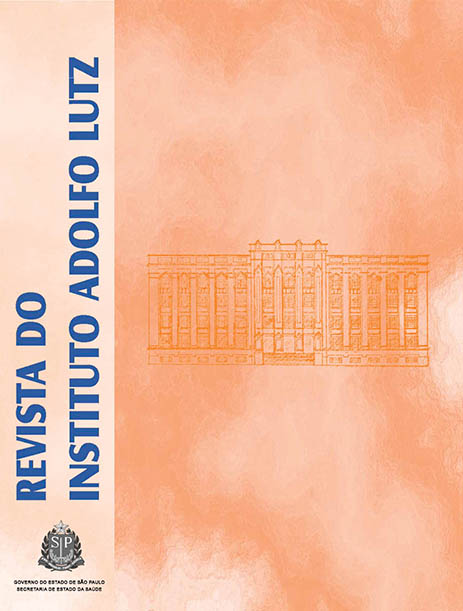Abstract
Tucupi, a product highly consumed by population living in the north of Brazil, is obtained by fermenting and cooking manipueira, which is produced from dry cassava flour. For producing the tucupi, cassava roots with high contents of hydrogen cyanide (HCN) are used, and it is hazardous product when it is consumed. This study analyzed the total and free cyanide contents during the whole processing steps of manipueira until getting the final production of tucupi. In addition, pH, total acidity and soluble solids contents were determined during the all processing steps of tucupi production. The newly extracted manipueira showed 227.8 mg HCN/L of total cyanide and 46.6 mg HCN/L of free cyanide. After being treated by fermentation, manipueira showed a decrease in HCN contents, and the values of 37.1 mg HCN/L of total cyanide and 8.9 mg HCN/L of free cyanide were found in the final product tucupi. The values of pH (3.6), total acidity (12.3 meq NaOH/100mL) and soluble solids (8.1 ºBrix) were found. In this study, the tucupi did not show high contents of total and free cyanide by employing fermentation and cooking processes of manipueira.
References
1. Instituto Brasileiro de Geografia e Estatística – IBGE. Culturas temporárias e permanentes. Produção Agrícola Municipal. Brasil; 2009; 36:1-90.
2. Cagnon JR, Cereda MP, Pantarotto S. Glicosídeos cianogênicos da cassava: biossíntese, distribuição, destoxificação e métodos de dosagem. In: Cereda MP, coordenador. Tuberosas amiláceas latino-americanas. São Paulo: Fundação Cargill; 2002. p.83-99.
3. Chisté RC, Cohen, KO, Oliveira SS. Estudo das propriedades físico-químicas do tucupi. Ciênc Tecnol Aliment. 2007; 27(3):787-92.
4. Cereda MP. Caracterização dos subprodutos da industrialização da mandioca. In: Cereda MP, coordenador. Manejo, uso e tratamento de subprodutos da industrialização da mandioca. São Paulo: Fundação Cargill; 2002. p.13-37.
5. AOAC. Official methods of analysis of the Association of Official Analytical Chemists: edited Ig W. Horwitz 16th ed. Washington (DC): 1997; 2, p. 850.
6. Cooke RD. An enzymatic assay for the total cyanide content of cassava (Manihot esculenta Crantz). J Sci Food Agric. 1978; 29:345-52.
7. Essers AJA, Bosveld M, Van der Grift RM, Voragen AGJ. Studies on the quantification of specific cyanogens in cassava products and introduction of a new chromogen. J Sci Food Agric. 1993; 63:287-96.
8. STATSOFT. Statistica (data analysis software system), version 6; 2001.
9. Cereda MP. Processamento da mandioca como mecanismo de detoxificação. In: Cereda MP, coordenador. Tecnologia, usos e potencialidades de tuberosas amiláceas Latino Americanas. São Paulo: Fundação Cargill; 2002.p.47-80.
10. Chisté RC, Cohen KO, Mathias EA, Ramoa Junior AGA. Estudo das propriedades físico-químicas e microbiológicas no processamento da farinha de mandioca do grupo d’água. Ciênc Tecnol Aliment. 2007; 27(2):265-9.
11. Vilpoux OF. Produção de farinha d’água no Estado do Maranhão. In: Cereda MP, Vilpoux OF. Série Culturas de Tuberosas Amiláceas Latino Americanas. São Paulo: Fundação Cargill; 2003.p.621-42.
12. Cereda MP, Vilpoux O. Produtos regionais a base de mandioca ou derivados. In: Cereda MP, coordenador. Tecnologia, usos e potencialidades de tuberosas amiláceas Latino Americanas. São Paulo: Fundação Cargill; 2003.p.693-711.
13. Hosel W, Barz W. β-glucosidases from Cicer arientum L. Eur J Biochem. 1975; 57(2):607-16.
14. Ikediobi C, Onyia G, Eluwah C. A rapid inexpensive enzymatic assay for total cyanide in cassava products. Agric Biol Chem. 1980; 44(12):2803-9.
15. Cereda MP, Lopes AM. Determinação do potencial de intoxicação em ratos, de linamarina extraída de mandioca. V Simpósio Latino-Americano de Ciência de Alimentos; novembro de 2003; Campinas, São Paulo.
16. Chalker JM, Bernardes GJL, Lin YA, Davis BG. Chemical modification of proteins at cysteine: oppportunities in chemistry and biology. Chem Asian J. 2009; 4:630-40.

This work is licensed under a Creative Commons Attribution 4.0 International License.
Copyright (c) 2011 Instituto Adolfo Lutz Journal
